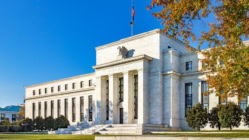
CRACK!
That really loud cracking sound we all heard yesterday was a giant crevice opening in the labor market – and rates fell sharply in response.
We got the JOLTS report yesterday and the ADP report today, and among other things, we are seeing: (1) slower job creations; (2) the creation of part-time jobs instead of full-time jobs, making new jobs data much less rosy; (3) the double counting of new jobs because of the way openings are posted online; (4) “quiet cutting” where employers shift employees into lower-paying jobs; (5) much less job switching; and (6) less confidence in employers, based on employee surveys. Thank you MBS Highway for this info.
This is significant because the Fed has seemed to shift its focus from falling inflation to what they think is a very tight labor market. So, cracks in the labor market make it much less likely that the Fed will hold its hawkish (high rate) stance. In addition, cracks of this nature are often the first indication that a recession is finally setting in.
Why So Many Lenders Have Rates Below The National Average (it’s not what you think)
Every day I share two rate quotes, and they are always considerably lower than the “national average rate” quoted in this Mortgage News Daily Chart.
And – it is NOT because JVM is awesome, but I so badly want to say that it is 😊
As of this morning, the national average is 7.06%, but my quotes for no points loans are 6.25% (FHA) and 6.75% (Fannie Mae/Conforming).
Here are a few reasons why lenders have lower-than-average rates:
- Higher Loan Amounts Have Lower Rates. I mentioned in this recent blog – A Crashing Mortgage Industry – that it costs lenders $10,000 to $11,000 on average to produce a single loan. And – that is the case whether the loan is $200,000 or $800,000. So, as a result, lenders with smaller average loan amounts necessarily must charge higher rates in order to cover their costs. (Remember – lenders sell their loans after they fund for a “premium” to investors, and that is the primary way in which they earn money; and the higher the rate, the bigger the premium). I have a friend in a South Carolina market with a model similar to JVM’s, but his rates are about 1/2 percent higher than ours. The reason is because his average loan amount is less than 1/3 the size of our average loan amount. The assumed loan amounts in my rate quotes in this blog are $712,500 (Fannie Mae) and just under $1 million (FHA). At JVM, we can quote rates that will earn us 1% of the loan amount when we sell the loans, and still make money. But, if our average loan amount was only $200,000, a 1% premium would not come close to covering our costs.
- No Loan Level Price Adjustments/No “Hits” To Pricing. In this world-famous blog (read by tens or even hundreds of people), Fannie Mae’s Greatest Hits, I explain how Fannie Mae has numerous “hits” or rate increases for various factors such as down payment %, credit scores, and property type (condo vs. SFR). BUT, those “hits” or Loan Level Pricing Adjustments are waived for first-time homebuyers now. And, my “conforming” quote below assumes the buyer is a first-timer. If she was NOT a first-timer under those same circumstances (680 FICO, Condo, 5% down), her rate would be over 1% higher!
- FHA Has Lower Rates. Another reason my quotes are so much lower is that one of them is an FHA scenario, and FHA rates are often as much as 1/2% LOWER than Fannie Mae rates. Many loan officers skillfully convince FHA borrowers otherwise, and rip their heads clean off (a friendly expression we use in the industry) when locking in rates, but rest assured, FHA rates are always lower.
- WAY MORE Competition In Large Metros. JVM has offices in two of the largest and most competitive metro areas in the entire country – the San Francisco Bay Area and the Dallas/Fort Worth Area. In addition, we also compete heavily in Houston, Austin, LA and Phoenix. And – all of those metros are literally awash in loan officers, making the competition nothing short of brutal. In sharp contrast, I have friends who have branches in Redding, CA, Fresno, CA, Grand Junction, CO, and Chattanooga, TN – and they all have much fatter margins (higher rates) than we could ever dream of having. And the reason is simply the lack of competition. Those branches have strong established relationships in much less crowded markets – so they can charge higher rates than JVM ever could.
- OK – JVM Is Sort Of Awesome… (no middle managers; no commissions). Heejin once worked for a mortgage bank where they had middle managers for pretty much everything including dog walking, coffee making, jumping up and down, running around in circles, and basket weaving. Most of them were friends of management who, needless to say, did nothing to spur more loan production – but ALL of them demanded compensation of one form or another. And that in turn forced that mortgage bank to offer rates that were far higher than what JVM offers, irrespective of loan size or the geographic area. These middle managers are slowly but surely getting thinned out, but they still plague all too many mortgage banks. JVM’s rates are also a bit lower because we don’t pay loan officer commissions.
Sign up to receive our blog daily
























